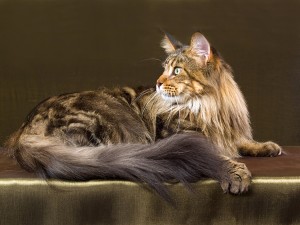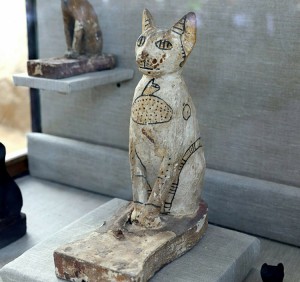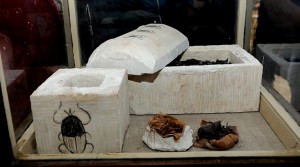Of Catnip and Mosquitoes
Thursday, January 28th, 2021Think of your favorite food. Imagine the cheesy or chocolaty or crispy delight. You might want to eat that food forever and ever. You might want to roll around in that food and change your name to that food. (Okay, maybe that’s a little too far.) But cats feel that strongly about a particular treat. They might not want to roll around in pizza or chocolate cake. But, they may want to roll around in their favorite herb: catnip. Catnip is a strong-smelling plant that many cats love to sniff. When exposed to catnip, a cat might rub its head and body on the herb, roll around in it, chew it, meow, and generally act crazier than usual. In addition, new research from Japan suggests that all that rolling around in catnip actually has health benefits for cats. Chemical compounds in catnip may help our feline friends ward off mosquitoes, pesky insects whose bites can transmit heartworm infections in cats.
The way in which scientists came to this conclusion may surprise you. No, researchers did not invite a dozen or so cats to a camping weekend. They did not give the cats supplies for feline-friendly s’mores—made with catnip and tuna sandwiched between kibble crackers. Researchers did not then examine whether mosquitos munched on cats while they told ghost stories around a campfire. No, none of this happened.
Instead, researchers gave some cats scraps of paper soaked with iridoid, a chemical in catnip that affects pleasure areas in the cat’s brain. The cats then rolled around in these slips of paper, reveling in the scientific process. Some cats did not receive these slips of paper. The researchers then placed the cats—both iridoid-perfumed and not—within reach of many mosquitoes. The mosquitoes bit the faces of the cats who had not received the iridoid-soaked paper. However, the mosquitoes did not bite the faces of the cats who had received the iridoid-soaked paper.
We know what you’re thinking: “Wait, if I rub some catnip on my body, will mosquitoes stay away from me?” And, unfortunately, the researchers don’t recommend that humans use catnip as a natural repellent (although it may help you attract the neighborhood kitties). In fact, researchers don’t even recommend that cats should use catnip as a natural repellent, until there is more evidence.
But, you can use catnip in other ways. Catnip has been cultivated for centuries and used for medicinal purposes. A tonic made from the plant is said to be a good remedy for colds. Catnip is also used as an herbal tea and provides a seasoning for cooking. So, if you can get your hands on some traditional human foods seasoned with catnip, enjoy! You will not have to share with mosquitoes. But, as for your cat, that might be a different story . . .










